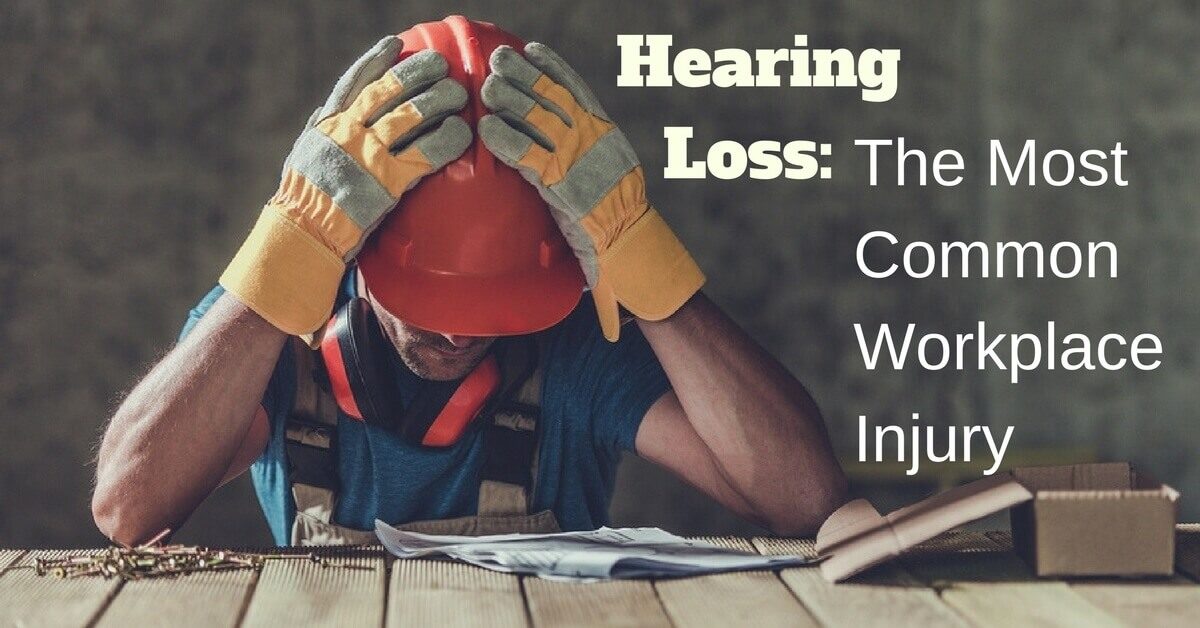When we think of on-the-job injuries, we might think of chronic back pain or sore joints. Rarely do we think of hearing loss!
In the United States, hearing loss is the third most common medical condition, affecting 48 million Americans. Did you know that it is also a prevalent condition in workplaces? According to the Occupational Safety and Health Administration (OSHA), there are “twenty-two million workers exposed to potentially damaging noise at work each year.” It is estimated that 60% of the American workforce experiences some degree of hearing loss.
A new study from the Center for Disease Control and Prevention (CDC) reveals that nearly 13% of US workers suffer from hearing loss. Read on to learn more about work-related hearing loss and what you can do to protect yourself on the job.
Study: One in Eight Workers in the US Has a Hearing Loss
According to a new study from the CDC, which appeared in a Morbidity and Mortality weekly report from 2016, one in eight workers experiences some degree of hearing loss. While it is not definitive whether these cases of hearing loss are caused by workplace conditions, the CDC notes that in certain industries, there are higher incidents of hearing loss.
In their report, the CDC find that the mining industry has the highest exposure rate to noise (76%), with 17% of miners experiencing some form of hearing impairment. Construction follows mining as the second loudest occupation, with 16% of construction workers experiencing some form of hearing impairment. In a close third is the manufacturing industry, with about 14% of workers suffering from hearing loss.
Protective measures are of utmost importance in these industries, according to Dr. Darius Kohan, chief of otology/neurotology at Lenox Hill Hospital in NYC and one of the authors of the study. In fact, ear protection could go a long way to prevent hearing damage. Dr. Kohan says: “Employees who utilize ear protection in noisy environments, such as firemen, policemen, ambulance workers, had the lowest prevalence of hearing loss – demonstrating how proper noise protection can be achieved with minimal effort.”
Noise-Induced Hearing Loss in the Workplace
Most workplace-related hearing loss can be categorized as noise-induced hearing loss. As one of the most common forms of hearing loss, noise-induced hearing loss interferes with the way our brains receive sound. Noise-induced hearing loss occurs gradually, which means we may not notice it at first. Exposure to loud sounds on a regular basis harms our inner ear hair cells, which could lead to permanent hearing loss.
The CDC’s National Institute for Occupational Safety and Health (NIOSH) recommends an exposure limit of 85 decibels for no more than 8 hours. In a series of assessments, NIOSH found that 40 years of exposure to sounds at 85 decibels for 8 hours a day poses an 8% risk for developing hearing loss – compared to the 25% risk with 90 decibels in a work day. In other words, reducing 5 decibels on the job (over 8 hours in a work day) can make an enormous difference in protecting your hearing abilities.
Preventing Occupational Hearing Loss
Coal mining, construction, and manufacturing top the CDC’s list of occupations with dangerous noise levels, but what about other jobs?
Indeed, many of other jobs expose us to dangerous levels of sound, but we simply do not think of it. For example, nursery school teachers are at risk for hearing damage. Schools are noisy environments; studies have measured noise levels to fall anywhere between 40 to 105 dB in a school setting. Similarly, hair stylists are exposed to high levels of noise on a regular basis. Hair dryers clock in at 85 decibels, and while they are only used in short bursts at a time, the damage could accumulate over years of employment.
Most “loud” industries provide employees with custom hearing protection. Follow your employer’s instructions on the job. These instruments will protect your hearing from the dangerous sounds you may experience during the work day.
If you do not use hearing protection on the job, you may want to check the noise levels in your workplace. NIOSH offers a sound meter that you may download to your smartphone, which measures the volume and decibels in your workplace. If the noise level in your workplace exceeds 85 decibels, and your employer does not provide hearing protection, it is important to request accommodations from human resources.
To protect your own hearing, you may also get custom hearing protection. Custom hearing protection is made from molds of your ear, providing a snug fit that filters out dangerous decibels while still allow you to access the sounds you need in your workplace environment. For more information on custom ear protection, contact us at Hear Care Rhode Island today.

